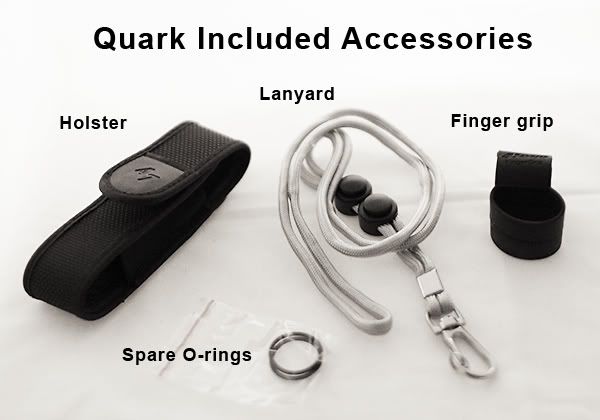Budget LED Lights Continued
The Romisen lights seem to get good marks for LED lights in the $10-25 range.
http://www.shiningbeam.com/servlet/the-All-Flashlights/Categories
Looks like Shining Beam has a similar discount code when searched.
I still like the 4Sevens and Fenix for price vs. quaility best. I have had three that are used almost daily for over two years and still going strong.
The Quarks in addition to a 10 year warranty come with a nice set of accessories.
The high power (light) engines currently are the Cree Emitter XPG R5.
Discount Sales
Most all retailers (online) have discount codes which are available if sought. For example everything on the 4Sevens site uses the CPF8 code for a 8% discount. Many have closeouts, purging inventory of prior models. Sacrafice a few lumens and save some $$.
Example of accessories. Clips are a personal preferance. Many manufactures offer their lights with and without, some are removable and some are even reversable. The clip might act as the detent to keep it from rolling.

The Romisen lights seem to get good marks for LED lights in the $10-25 range.
http://www.shiningbeam.com/servlet/the-All-Flashlights/Categories
Looks like Shining Beam has a similar discount code when searched.
I still like the 4Sevens and Fenix for price vs. quaility best. I have had three that are used almost daily for over two years and still going strong.
The Quarks in addition to a 10 year warranty come with a nice set of accessories.
The high power (light) engines currently are the Cree Emitter XPG R5.
Discount Sales
Most all retailers (online) have discount codes which are available if sought. For example everything on the 4Sevens site uses the CPF8 code for a 8% discount. Many have closeouts, purging inventory of prior models. Sacrafice a few lumens and save some $$.
Example of accessories. Clips are a personal preferance. Many manufactures offer their lights with and without, some are removable and some are even reversable. The clip might act as the detent to keep it from rolling.

Last edited:
